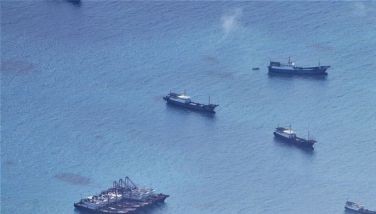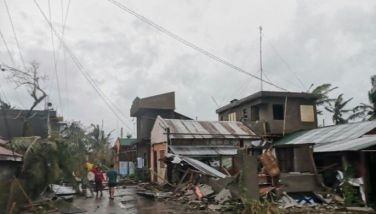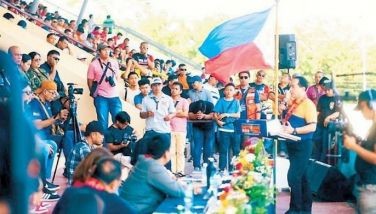Burial starts for 1,400
TACLOBAN CITY, Philippines – Nearly two months after Super Typhoon Yolanda struck, authorities finally began burying yesterday some of the 1,400 bodies left rotting in an open field here, but the mass grave is only temporary.
Tacloban City Mayor Alfred Romualdez witnessed the mass burial in Barangay Suhi of at least 100 corpses. The burial was done by personnel of the National Bureau of Investigation (NBI), Department of Health (DOH), Philippine Red Cross and the city government. Military and police officers were also present.
Sioban Ruddel, representative of the World Health Organization (WHO), oversaw the re-bagging of the corpses before the burial. NBI personnel took DNA samples and put tags on each of the body bags for future identification.
A backhoe was used in digging a three-foot-wide, 40-foot-long and four-foot-deep hole where the bagged corpses were buried.
“The burial site here is temporary and thus only shallow excavation to enable easy access later when authorities will have to take out a cadaver for identification by relatives,†Ruddel told The Freeman.
The WHO provided technical assistance to concerned government agencies upon the request of Justice Secretary Leila de Lima.
Ruddel said the burial could be completed by weekend.
DNA samples
NBI medico-legal officer Arnel Bacod said DNA samples have so far been taken from 418 cadavers.
DNA samples were being taken from 400 other corpses as of press time.
The NBI said a total of 146 cadavers that have been identified by relatives were also transported for burial at the Holy Cross Cemetery in Barangay Basper.
The city government earlier bought a 6,000-square meter lot as permanent burial site for the corpses that have been identified.
Evangeline Gallo, 67, whose house was only 30 meters away from the pile of cadavers, said she was thankful for what the government did.
“This is our Christmas gift for the new year,†she said.
Ruddel allayed residents’ fear that the corpses may cause an outbreak of disease in the area. “They died of natural causes and not of diseases,†she said.
Coordination with Tacloban City gov’t
Secretary Herminio Coloma Jr. of the Presidential Communications Operations Office said Presidential Assistant for Rehabilitation and Recovery Panfilo Lacson reported that the DOH sent 1,500 body bags and protective kits for personnel doing the work, the Department of Public Works and Highways sent additional backhoes and payloaders and the NBI redeployed its forensic team.
Coloma said during a press briefing there had been concerns on the procedure of identifying the victims because the NBI followed the system being used by the International Police or Interpol.
“Based on the observation of some agencies, and this had been conveyed to the NBI, maybe the procedures could be modified since Interpol procedures were used to gather evidence in criminal cases and were thus more detailed. Victims of the calamity are not similarly situated as victims of crimes, so I think that is a point that may be discussed,†he said.
He said after inter-agency coordination, it was agreed to address the issue for a more efficient identification process.
“The facilities have been provided and they now focus on speeding up the burial process, giving due respect to the remains of those who perished in the calamity,†Coloma said. – Marlon Necito Tano, Freeman News Service, Aurea Calica
- Latest
- Trending
































